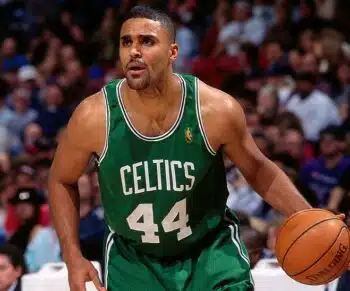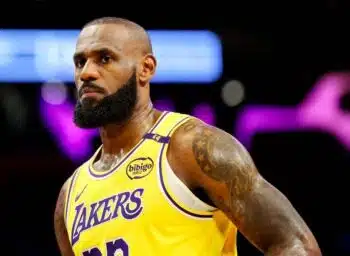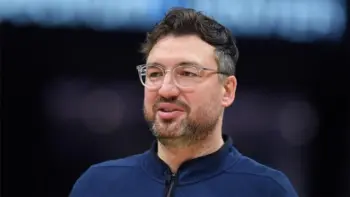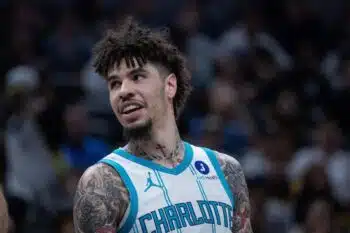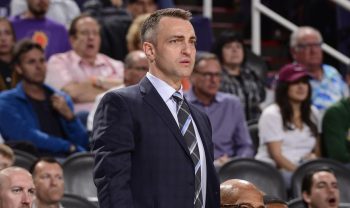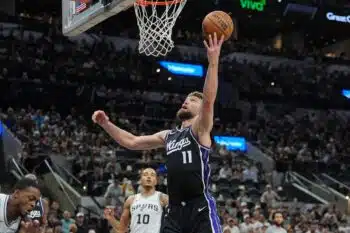NBA
NBA Finals 2025: 3 Takeaways From Game 3
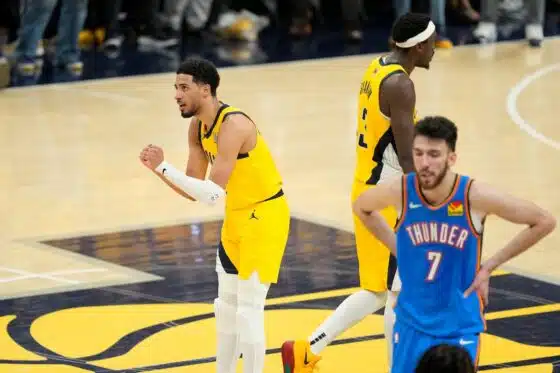
Shai Gilgeous-Alexander, MVP of the NBA, hunched over with the edge of his shorts clamped between his palms and tightly gripping fingers, pressing down into his knees. If the Indiana Pacers do go onto to win the 2025 NBA Finals, that should be the defining image of their Game 3, 116-107 victory over the Oklahoma City Thunder.
Indiana did not need the kind of miraculous comeback in the final minutes that will define this postseason run. But it may have accomplished something more shocking on Wednesday night by exhausting Gilgeous-Alexander and the Thunder.
Oklahoma City’s unrelenting ball pressure, the hallmark of its 68-win regular season and the trait that carried it to the NBA Finals, finally relented in the second half of Game 3. Gilgeous-Alexander, who has personified nonchalance while cementing himself as one of the greatest pure bucket-getters ever, started the night by throwing a frustration elbow to earn an offensive foul and ended it gasping for air.
The cherubic Pacers have been largely embraced as a team of destiny in 2025, too naive to be scared, too headstrong to fail. But maybe that’s not giving them enough credit. Maybe, they have a superpower of their own in these Finals.
Indiana, Pacing
The most well-conditioned team in the NBA could not take full advantage of their superpower over the first two games of the Finals. Fewer than 9 percent of the Pacers’ possessions came in transition in Game 1, and though that number increased to 12.9 percent in Game 2, (per Cleaning the Glass), that’s still way below their season average.
Beyond the numbers, their half-court possessions felt slow, too. Throughout the regular season, Indiana always played faster than simple tracking numbers would suggest; many of its “half-court” possessions would start by attacking a cross-match found by throwing the ball up the floor. Head coach Rick Carlisle’s team may not have shot until the shot clock hit 12, but pushing the pace ultimately engineered a good shot.
We saw little of that early in the Finals, and no Pacer suffered more than Tyrese Haliburton. In Game 2, he had scored just five points on seven shot attempts entering the garbage-time-filled fourth quarter. But amidst the trash, Carlisle found something that worked: taking the ball out of Haliburton’s hands, if just for a second.
Other players would bring it up, or Haliburton would throw it ahead and sprint into a handoff, allowing him to shake off Oklahoma City’s perimeter defenders without a live dribble. And well, guess the first out-of-timeout play Indiana ran in Game 3:
Haliburton put up 22/9/11 in Game 3, and he simply played better for much of the game. When the ball was in his hands, he got the best of Oklahoma City’s guards many times, specifically by rejecting screens or feigning the reject, getting an angle downhill either way. He also took what was given to him, either in the form of floaters or pull-up jumpers. And by the end of the game, yes, Oklahoma City’s defenders seemingly grew tired of applying such extended ball pressure and sagged off.
This play has it all:
Andrew Nembhard throws the ball ahead to Bennedict Mathurin (27 points) then fills Haliburton place on the weak-side. In just five seconds after securing the rebound, Indiana’s already made a couple passes and off-ball moves. Luguentz Dort has already run to the paint to process Indiana’s counter attack as he switches back onto Haliburton, only to discover he’s 10 feet away, buried underneath a Myles Turner screen. He loses a game of cat-and-mouse, forcing Chet Holmgren to make an emergency switch, but Haliburton has already launched a three.
Cleaning the Glass clocked over 17 percent of Indiana’s Game 3 possessions as transition opportunities, a fat mark that exceeds even its regular-season average. That — and all the quick-hitting possession not tabulated as transition — didn’t only help Haliburton. During one second quarter play, Pascal Siakam posts up with nearly 20 seconds on the shot-clock, meaning the Thunder’s back-line isn’t prepared to fight for position and jump all over the entry pass.
Mathurin eventually feasts off it, and it’s the exact type of play Indiana couldn’t produce in the first two games of the Finals:
1: IND trying to post Pascal vs. a set OKC defense with single-digits on the shot-clock in G1
2: IND throwing an entry pass with 20 on the shot-clock in G3 pic.twitter.com/ZGDabkyssj
— Lucas Kaplan (@LucasKaplan_) June 12, 2025
Many Pacers made many plays. Mathurin made contested shots; T.J. McConnell stole inbounds passes (plural) and got into the teeth of the defense; Haliburton won many battles at the point of attack. But the Pacers, as a team, were able to play their style of ball in Game 3, and that should drop a pit into Oklahoma City’s stomach.
Taking The ‘O’ Out Of OKC
And yet, the Thunder should be much more concerned about their own offense.
In Game 2, head coach Mark Daigneault did his best to hand his fashion-minded superstar plenty of runways to stroll down and it worked. Gilgeous-Alexander initiated possessions near the half-court logo almost every time down and, after roasting whoever hedged on his screens — namely, Haliburton and Myles Turner — he could not be stopped with a full head of steam.
He scored 38 points, while Oklahoma City created plenty of free throws and 3-pointers on comfortable drive-and-kick possessions. Indiana’s response to this Thunder adjustment was a bold one: You want to play a full-court game? Let’s do it.
Nembhard, Ben Sheppard, Aaron Nesmith and whoever else guarded Gilgeous-Alexander guarded him for 94 feet. Early on, the results were indistinguishable from Game 2:
But Indiana stuck to the plan and it paid major dividends. Gilgeous-Alexander started to drag, while Haliburton and Turner learned how to approach the ball-screens. On this play, perhaps Indiana’s best rep of the night, it’s Turner supporting Nembhard’s excellent effort by sliding his feet and it leads to one of Oklahoma City’s 19 turnovers.
off a make, Nembhard denies SGA, then eventually sticks with him through a screen. Myles does a great job sliding his feet, and Hali preys on a poor pass: pic.twitter.com/mx3GwBjjaR
— Lucas Kaplan (@LucasKaplan_) June 12, 2025
A Poor Shot Profile
The most worrisome stat for the Thunder is not the 19 turnovers, though. It is, once again, the shot distribution. Oklahoma City attempted 21 3-pointers and shot an incomprehensible 12-of-39 from the midrange, per Cleaning the Glass.
Indiana did not pull away until the dying minutes, but it soundly deserved to win this game. As in Game 1, the Thunder did not find enough high-quality shots to ever go on an extended run. Even when things were going smoothly for the 68-win juggernaut, things were difficult.
Part of this is building a roster around Gilgeous-Alexander and Jalen Williams as the two high-usage ball-handlers. Part of it is the monotony of said offense, increasingly easy to plan for as a series progresses.
On Wednesday, Gilgeous-Alexander’s decision-making left a bit to be desired, as seen in the clip a few paragraphs above. And Williams — who, in all fairness, did score 26 points on 9-of-18 shooting — hasn’t shown the handle to consistently get all the way to the rim and spray passes out to shooters. But the Pacers deserves credit here, too; by the fourth quarter, they were able to both apply pressure on Gilgeous-Alexander 40 feet out while recovering to Oklahoma City’s bigs on the short roll.
None of these possessions ending in 3-pointers, thanks to all of the aforementioned factors, is a tough pill to swallow for the Thunder:
In such a dense, fascinating Finals, certain matchups or players get short-changed. Though you wouldn’t know it from this article, Game 3 will go down as the Bennedict Mathurin Game in much of Indiana. We also didn’t delve into the curious Daigneault decision to play his double-big lineup of Holmgren and Isaiah Hartenstein for just a handful of (successful minutes), nor Carlisle playing Siakam more often as the lone big.
Lineup decisions, though, will not stick in my mind after watching Game 3 of this epic series. Rather, the emblematic play, beyond the defining still image of a gassed Gilgeous-Alexander, is this dagger with which only Indiana could stab.
The Pacers are 11 points per 100 possessions better on defense when Pascal Siakam is on the floor. Ranks in the 99th percentile.
Watch him guard SGA on this crucial possession. Wow. pic.twitter.com/CqEqcVV41i
— Esfandiar Baraheni (@JustEsBaraheni) June 12, 2025
Following a total shutdown of Gilgeous-Alexander, led by Siakam and featuring a strong hedge from Haliburton, Nembhard tracks down a 30/70 loose ball. Two kick-ahead passes later and Siakam is returning the favor to Gilgeous-Alexander, only one of them still with air in his lungs. The Pacers, up six with just a minute left, have barreled down the court. They see an opportunity to score.
Is it the right play in this situation? That’s beside the point. It’s their play.
